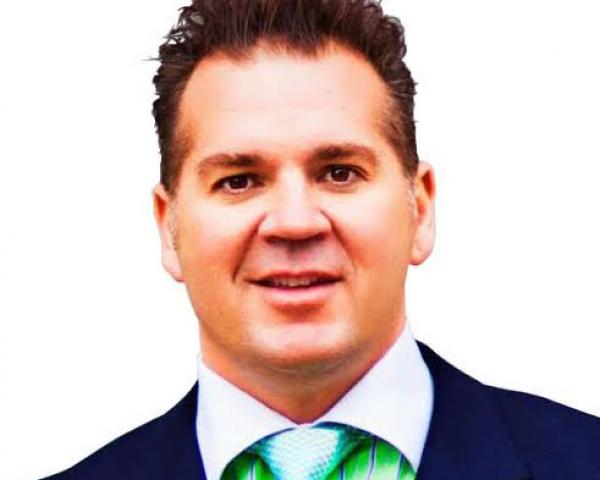It seems like you can’t watch television for 10 minutes these days without hearing a sneaky gecko, a suit-clad man named Mayhem or Progressive’s Flo pushing insurance. Insurance ads like GEICO’s bring some humor to your between-show times, and they're definitely better than those psoriasis medication ads. But what’s not so funny is that policyholders are spending billions to broadcast those messages across the airwaves.
Now, with auto insurance premiums rising faster than they have in nearly 13 years, more drivers are asking why they’re paying for insurers to outspend every other American industry on ads by nearly 8%. In my opinion, it’s a fair question — especially considering that there are better ways to earn satisfied policyholders.
Ads Don’t Make Happy Customers
In 2014, S&P Global (formerly SNL Financial) analyzed auto insurance advertising spending and found that GEICO led the pack, spending almost $1.2 billion annually, closely followed by Allstate at more than $937 million. Those figures keep climbing, but do they translate to better service?
The Consumer Federation of America broke down the ratio of advertising to premiums and found that GEICO spent 6% of its budget on ads in 2013, while Allstate spent 5.7%. Interestingly, Allstate’s recent earnings report showed its net income fell by almost $1.2 billion from the first quarter of 2015 to the first quarter of 2016. GEICO, not to be outdone, had one of its worst years on record in 2015.
When it comes to customer satisfaction, though, the big spenders aren’t winning. When Reviews.com weighed the nation’s largest auto insurance companies for dependability, financial standing, reliability and customer focus, it was Amica and State Farm that came out on top. What do Amica and State Farm have in common? They’re both policyholder-owned.
So while investor pressures have put stockholder-owned GEICO and Allstate on top for ad spending, they’re not pleasing customers like mutually owned Amica and State Farm.
See also: How to Redesign Customer Experience
There are plenty of differences between mutual companies and investor-owned insurance companies, of course, but a big one is how they spend profits. While policyholder-owned insurers also purchase ads to tempt new customers, they — unlike stockholder-owned insurers — return a chunk of their profits to members in the form of dividends or reduced premiums.
Cut Ads, Not Service
Mutual companies have shown that it’s possible to contain — even to reduce — costs while still satisfying customers. After all, when was the last time you saw an Amica ad on television?
The first — and perhaps most important — step to keeping rates low is to reduce customers’ exposure to risk. Our company recently tightened its underwriting guidelines to contain claims and allow policyholders to benefit from the cost savings. It’s a difficult decision that can hinder sales, but it’s the best way to keep costs low for everyone. Next, find ways to get your name out there that benefit existing policyholders.
In lieu of ads, we conduct programs called brand energizers that reward the affinity groups we serve. Nurse’s Night Out, for example, treats our life-saving policyholders to an evening of fun, while our Work Hard/Play Hard sweepstakes are a great way to build word of mouth while rewarding customers who are first responders.
Reward programs are just one way to build your brand without ads. We’ve developed a team of field marketing managers, our brand ambassadors, who make appearances at schools, educational events and other local groups to explain the benefits of our policies. This model costs much less than a national television ad campaign while building our reputation in the communities we serve.
Hiring captive agents, too, is a good way to structure teams in a way that boosts service, not costs. Our account consultants are rewarded for bringing in new accounts, as well as for their retention efforts, and they’re not tied to particular clients. This creates incentives to provide world-class service to every potential client they encounter.
See also: Spending on Agents Beats Spending on Ads
Don’t forget the value of a strong retention program, which captive agents can help with. Happy customers are loyal customers, and the cost of retaining a customer is much lower than earning a new one. According to Bain, a mere 5% increase in customer retention could garner your company as much as a 95% profit increase.
A focus on retention also builds brand champions who are willing to tell others about their experience. Wouldn’t you rather hear a neighbor’s recommendation than a gecko’s sales pitch?
Lastly, build a strong surplus to protect yourself against unexpected losses. If a tornado strikes, you’re only as strong as your reserves. Invest in this surplus so you can weather disasters without raising policyholders’ rates in their time of need.
When I started working in the industry, I rarely saw an insurance ad on television. I’m now sick of them, and I know customers are, too. To keep policyholders happy without dropping billions on ads, try it the old-fashioned way: Cultivate strong relationships and even stronger reserves, focus on retaining customers and build a team of brand advocates. Maybe you — and all of America — can then get back to watching your show in peace.






